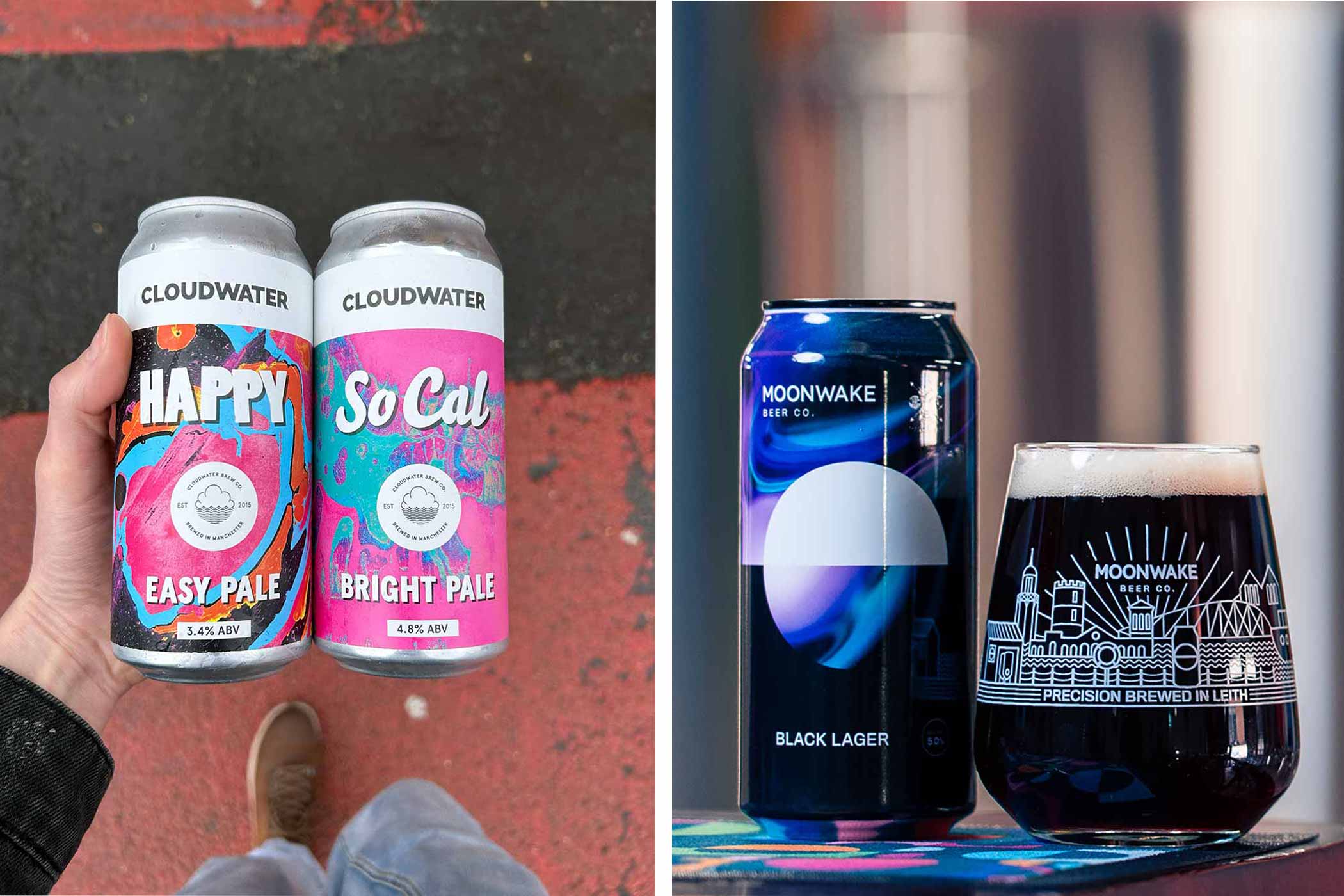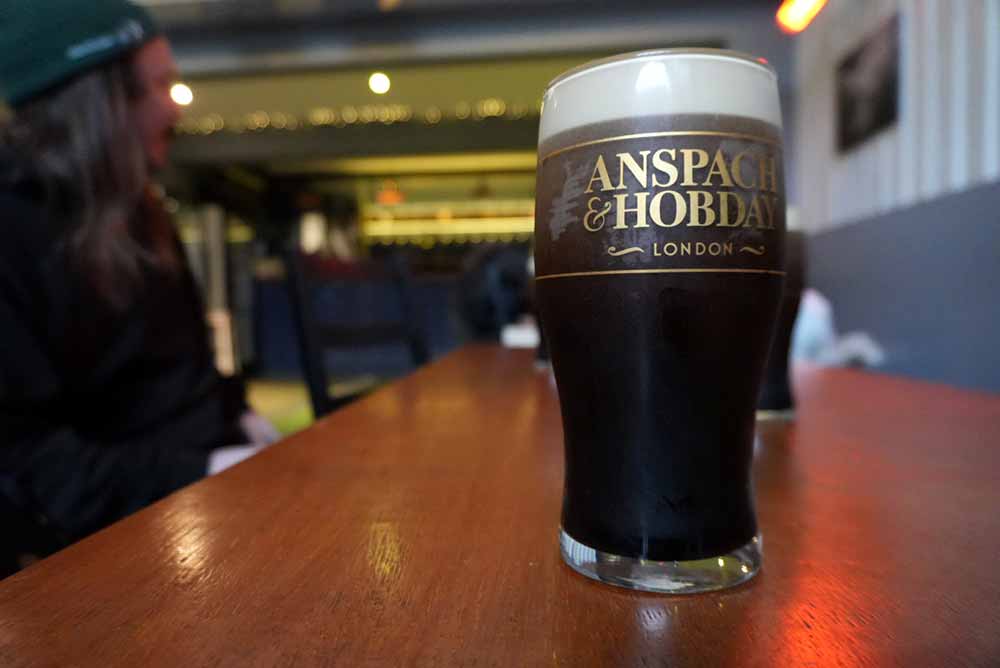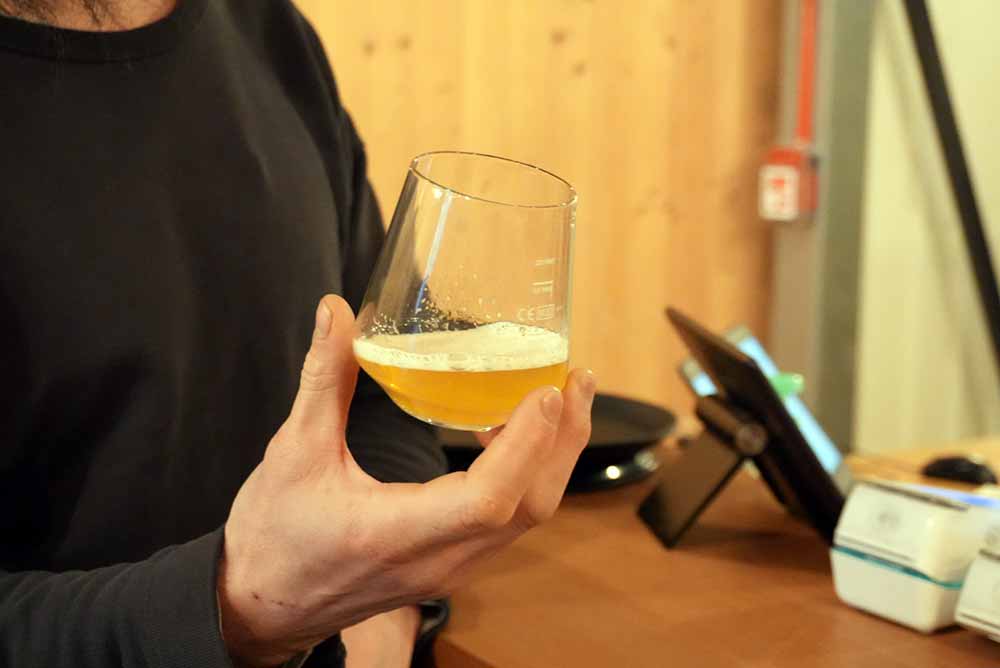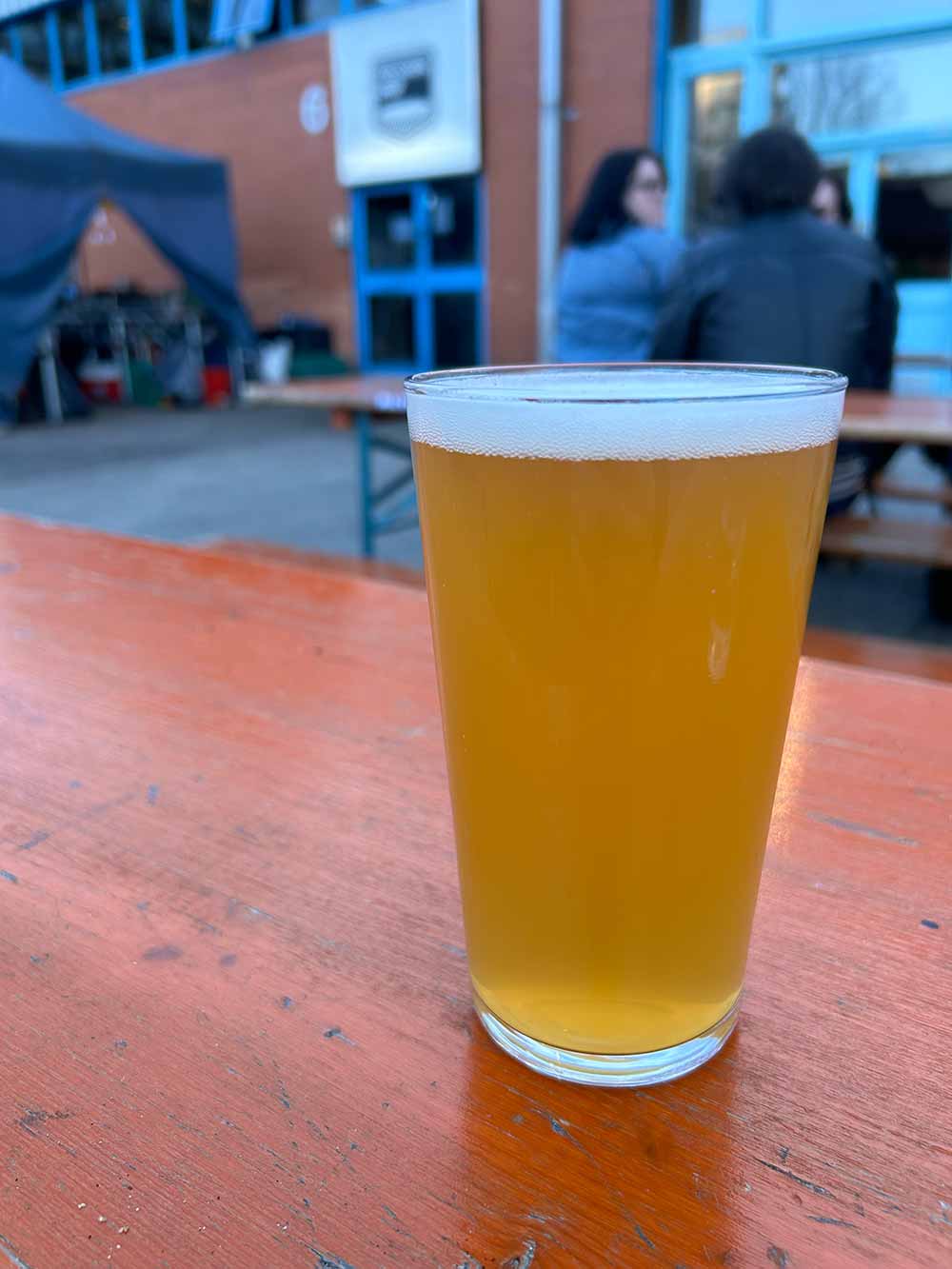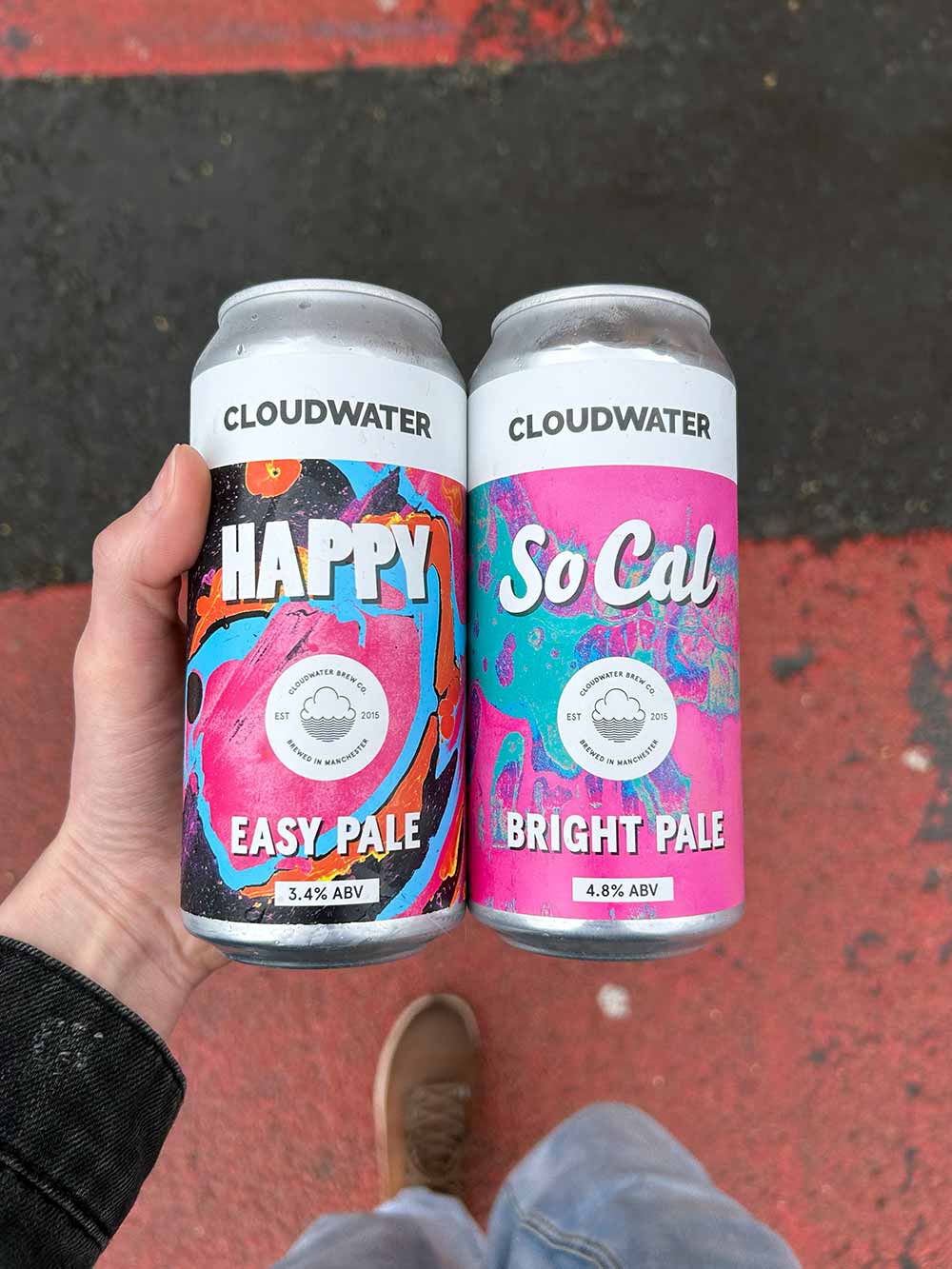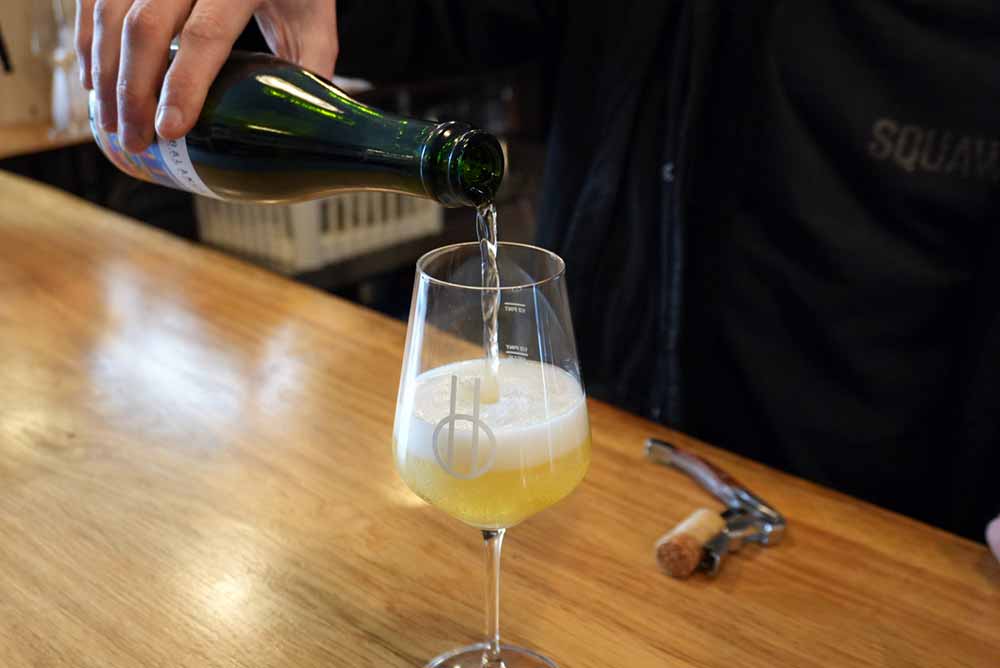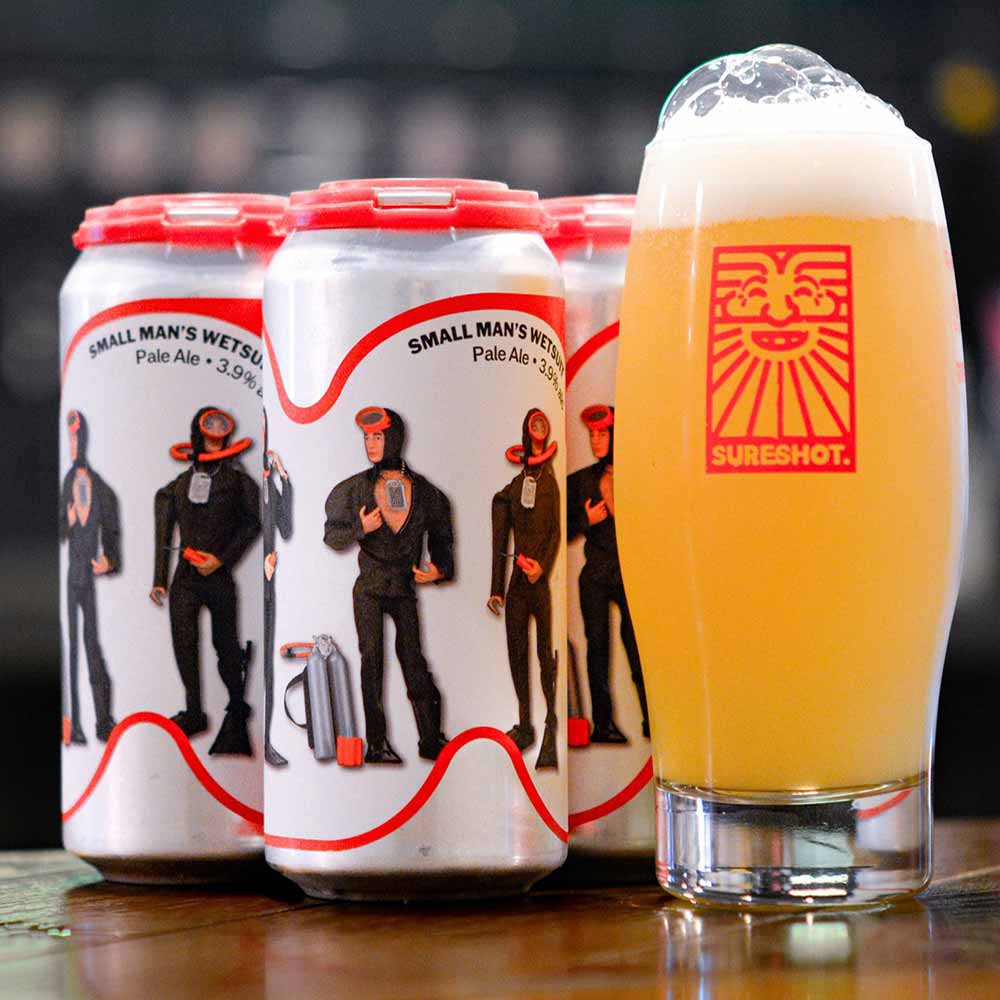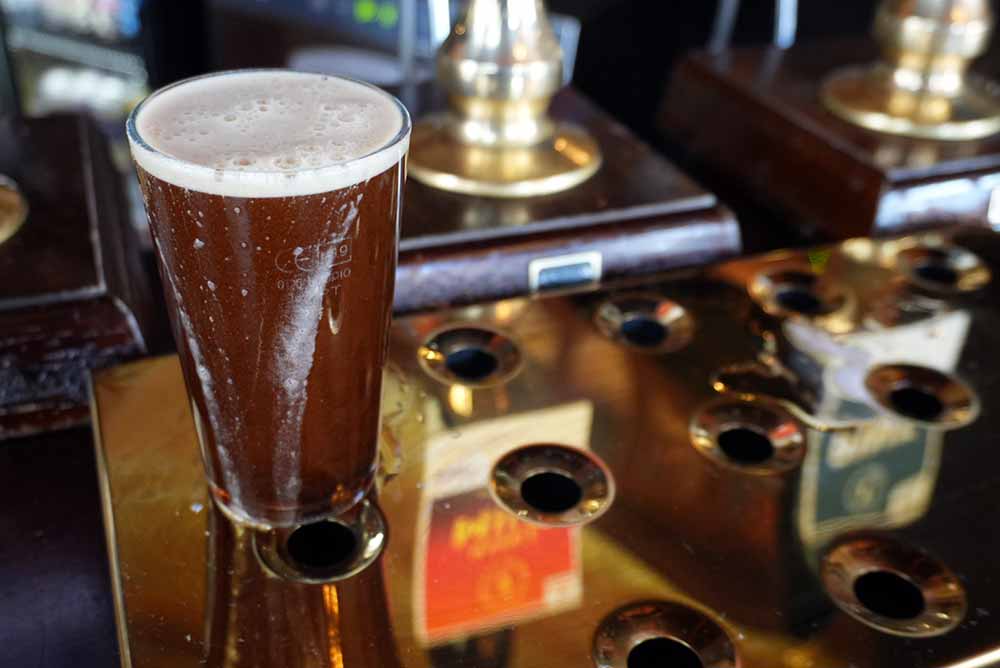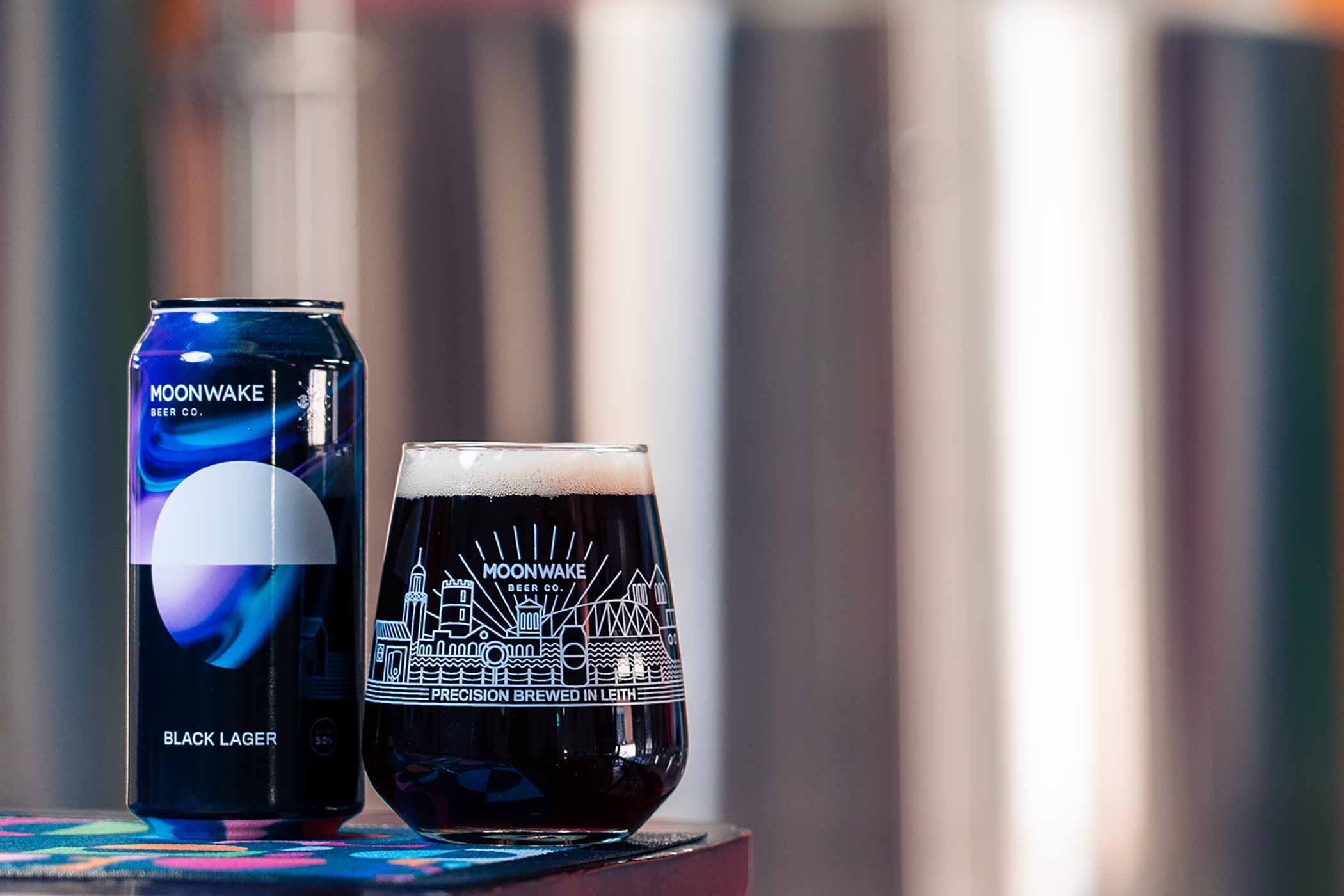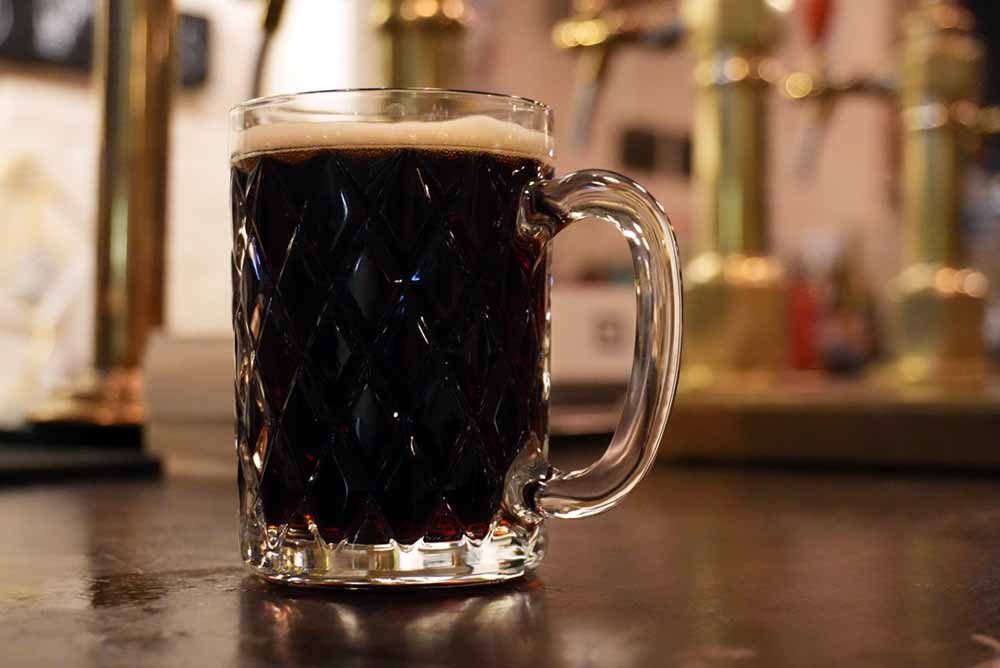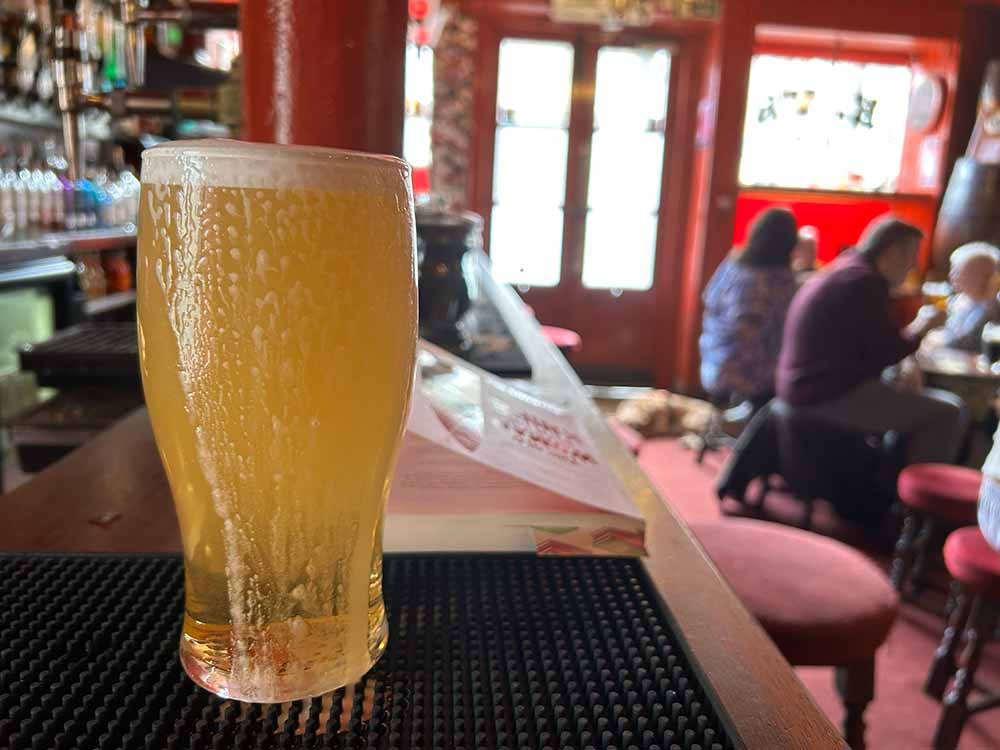Shop
The Top 12 Beers We Drank in May
Beerio!
Hottest Stories in May:
Phew, what a spring it has been. April started with a two-week trip to the U.K. and Czechia, where we…
????Found some crown jewels, aka our favorite breweries and pubs in London.
????Drank a nitro beer that might just be better than Guinness.
????Visited a two-time CAMRA National Pub of the Year in a little town called Tamworth.
Spent forty-eight hours drinking and eating our way through Manchester.
And found a little brewery on the shores of Edinburgh making one of our favorite black lagers.
When we returned from Europe, only several days passed before we took off for Vegas for the Craft Brewers Conference and World Beer Cup.
We were off to the East Coast a week and a half later to visit family and friends in New York City and D.C.
With so many trips on the docket, we’ve stacked up quite the pints. So, for the next couple of months, we’ll approach these pieces differently.
We’ve deemed this month our U.K. edition, recounting all our favorite cask beers—pales, bitters, milds! And yes, even a brown ale and black lager, too.
And next month, we’ll regale you with all the Hladinkas and Šnyts (not really Mlíkos) of Czech pale lagers we enjoyed across Czechia courtesy of a very generous invitation from The Czech Ministry of Agriculture.
Sit back, relax, and enjoy the flight…of beers!
Top 12 Beers We Drank in May 2024
London Black – Anspach & Hobday
London, England
Nitro Porter – We named Anspach & Hobday’s London Black as quite possibly one of the best in all of London. The story of this beer is legendary, giving the Goliath Guinness a run for its money in the world of nitro beers.
That takes guts and grit.
And it doesn’t hurt that London Black is premier leagues better than almost every Guinness I’ve had.
Anspach & Hobday Co-founders (and friends since kindergarten!) Paul Anspach and Jack Hobday start with straight-up London water. For the base, they use English pale malt with a blend of amber, chocolate, and highly kilned and roasted barley before adding East Kent Goldings and Cascade hops and a very clean American yeast ale strain that “lets everything else come through,” said Anspach. “It’s just super reliable; pretty simple.”
London Black accounts for over seventy percent of Anspach & Hobday’s output today. Walk into the taproom on a Friday, and Anspach says eighty percent of the people inside will have London Blacks in front of them.
Incredibly, Anspach & Hobday now directly compete with Guinness.
“You’ve got this David and Goliath fight thing, which is very attractive for people,” said Anspach. “It’s been a pretty wild ride, to be honest,”
The beer packs a punch, holding its own in the nitro ring.
The smoothness and drinkability stood out most from the first sip. But that’s backed up by robust taste.
“A lot of the flavor notes you talk about sound pretty bold,” Anspach shared. “There’s definitely notes of roasted coffee and chocolate…but it’s more like a dark chocolate and then dark fruits like red currants.”
London Black just made an indelible impression on my mind, and I’m confident that if you try it, it’ll make one on you, too.
Pale Ale: Talus – The Kernel
London, England
Pale Ale – The Kernel’s Founder, Evin O’Riordan, is something of a legend in London. Almost every major brewer has passed through his doors. Initially working in cheese, O’Riordan found a love for beer while helping a new Whole Foods opening in New York build a cheese cave.
At night, his co-workers would take him to famous beer bars in the East Village, such as DBA.
“I was basically explaining everything to them about cheese earlier in the day—this cheese comes from this milk, this cow, this recipe, this heritage, this tradition…and they flipped it back and just gave me that information about beer,” he recalled. “I just started wondering, why doesn’t this happen [in London]?”
In particular, the West Coast-style clean, hop-forward ales impressed him.
Beers like Sierra Nevada Pale Ale and Avery Maharaja. “I went from drinking pints of 4% ABV beer to an 11% ABV triple IPA,” he laughed. “You take a mouthful and go, whoa, whoa, whoa!”
When O’Riordan returned to England, he started homebrewing with the idea of opening a brewery.
The Kernel opened in 2009, when there were only about ten breweries in London, five or six of which were brewpubs, according to O’Riordan.
The first beer they made was a single-hop centennial pale ale to which they added an IPA, an export India porter, an export stout, and an imperial brown stout.
Today, O’Riordan says you’ll also find a pale ale, often featuring a different hop. ”The way it works is that whoever’s brewing gets to pick the hops,” he says. “I do get to pick the hops that go in the fridge, though.” When I visited, I tried a pale ale with Talus, a bit of a divisive hop.
“I’m divided about it myself,” said O’Riordan. “Sometimes I think it’s amazing, and sometimes I go, whoa, you’re a no.”
The hop works well in Pale Ale Talus, giving off a subtle coconut and citrus tone.
“The coconut is strong with this one,” O’Riordan says after swirling the glass and taking a whiff. “It’s very pleasant, and the thing I like most is that there’s a certain quality of bitterness in this particular hop that I find quite distinct and firm.”
I haven’t usually heard people describe bitterness as firm, so I ask O’Riordan to elaborate.
“It doesn’t linger or build,” he said. “It’s like, how can I perceive bitterness to be more bitter than actual bitterness?”
The beer sparked discussion, leaving an impression I still remembered when I sat down to write this piece over a month later.
Pale Fire – Pressure Drop Brewing
London, England
Pale Ale – The prince and princess of pale ales in London, Pressure Drop makes one of the beers that defined the nascent London craft beer scene in the mid-2010s—Pale Fire. Located in an industrial yard in Tottenham Hale that includes Beavertown, Pressure Drop’s taproom opened in 2016, giving East Londoners crushable, hop-forward beers in a taproom popping up in the brewery space.
Pale Fire, in particular, crushes pretty hard as a hazy 4.8% pale ale. Consider Pale Fire in England, like the Sierra Nevada Pale Ale in the U.S.; it’s the pale ale that so many breweries try to emulate.
We can attest to this beer’s juicy loveability. After catching a Tottenham game at N17, we strolled through the marshes of Walthamstow Wetlands to Pressure Drop’s industrial taproom just to snag a pint of Pale Fire.
If words like juicy and hazy aren’t in your vocabulary, Pressure Drop might honestly not be the place for you. But they do have a couple of lagers and dark beers. Really, though, you go to Pressure Drop for the dewey drafts.
Sonoma – Track Brewing
Manchester, England
Pale Ale – An epic bike trip from Virginia to California inspired Track Brewing Founder Sam Dyson to start a brewery.
The six-month cycling trip changed Dyson’s life. “I just kept on going and going,” he shared with me as I sat in his office at the brewery about a twenty-minute walk outside downtown Manchester. Dyson cycled around the entire world from Mexico down through Central America, Colombia down to the bottom of Argentina, around Australia, Indonesia, and Southeast Asia, through the ‘Stans,’ as he called them—Tajikistan, Kazakhstan, and Azerbaijan—through Georgia, Turkey, and back to Europe.
Despite visiting so many countries, one place stood out: Sonoma, CA.
When Dyson returned to Manchester and started Track Brewing, with the theme of making beers “off the beaten path.” The second beer he brewed, a hazy pale ale on cask, he named Sonoma, an homage to Northern California’s mountains, forests, and vineyards.
“It was just quite magical,” he reminisced. “I could cycle for an entire day and not come across anybody at all, and you’d be above the cloud line, look back down, and you were looking at the beach and everything covered in fog. It felt like being in a totally different world.”
An homage to his magical time cycling in Northern California, Sonoma has become a signature for Track. Dyson reflects proudly on the 3.8% ABV Mosaic dry-hopped pale ale, which he also hopped with Citra and Centennial; this one always sticks in his mind.
Actually, in most people’s minds at Track.
“The whole point of that beer was supposed to be really easy drinking, really citrusy, light, but have depths of flavor. I don’t know,” Dyson looked off into the distance. “But then Sonoma County is just the light there and the colors of the can. …To me, it just had what that place reminded me of.”
Ironic since most people have no idea where Sonoma is, much less what it’s like. Dyson jokes that people mispronounce and misspell the name all the time.
But it doesn’t matter.
Today, you’ll find Track’s ultra-coveted imperial barrel-aged stouts rated the highest on Untappd, but it’s Sonoma that well-known brewers such as Jeff Bagby of the former Bagby Beer Co. and Sam Richardson from Other Half want to drink the most.
And that should tell you all you need to know about this little beer.
SoCal – Cloudwater Brew Co.
Manchester, England
Pale Ale – In nine years, Cloudwater has gained more accolades than any other European brewery in the craft space. This Manchester-based brewery is probably one of the most recognized international breweries in the U.S.
“We’ve managed to gain a real loyal place in a lot of beer drinkers’ hearts,” Cloudwater Founder Paul Jones told me when I visited the taproom, a stone’s throw from Track Brewing.
Mainly because Jones has hustled his a** off.
He took the idea of a brewery in the U.K.—a small number of beers, little creativity, not much experimenting—and threw it into the clouds.
“We blew the barn doors off,” he says. “I think we set out to be entirely different from almost every other brewery in the U.K.”
And while Cloudwater’s triple IPAs and imperial stouts gain all the accreditation on Untappd, it’s a humble beer called SoCal that blew me away.
Inspired by the beers he drank in the States, Jones started Cloudwater in 2016 to make massive headway in the marketplace for hazy beer and double IPAs, which were pretty unheard of in the U.K. at the time.
Now a staple at Cloudwater, SoCal rips like a San Diego surfer.
“It’s just so easy to drink,” says Jones, who admits he has now visited somewhere between 100-120 breweries on the West Coast. “It is a beer made in the image of a lot of what I’ve personally drank.”
For me, the beer rippled with waves of grapefruit, green apple, and gooseberry. A touch of bitterness and pine balances out the slightly tart and pithy fruits, with the soft, pillowy mouthfeel bringing everything together.
Saison De Maison – Balance Brewing & Blending
Manchester, England
Saison – At Balance, I drank probably the best saison I’ve had in a long time. Manchester’s (and really one of the U.K.’s) only wild ale breweries, Balance, takes its name to heart. Co-founders James Horrock and Will Harris only make mixed-culture ales fermented and produced in barrels with wild yeast like lactobacillus.
But while the flavors can ping pong around your mouth like one of Forrest Gump’s table tennis matches, the last sip always returns you to equilibrium.
No beer showcases this better than Saison De Maison, a brett saison the pair brewed as their first-ever beer and aged in twenty-four barrels in the corner of a now-defunct brewery called Manchester Brewing Company.
Now on their sixth iteration, Horrock said they’re trying to dial in a final edition to serve as their house beer.
“It’s basically just a blend of a few different barrels of saison,” said Horrock. “Generally, we’re going for a medium- to low-acid profile, dry-hopped with various British hops for each blend.”
The current version has a base malt of sixty percent Maris Otter and forty percent wheat, along with U.K. Chinook and Bramling Cross hops, which Horrock says is a shoo-in for the final blend. “It’s got this curranty fruit character.”
But it’s another fruit that punches through—pineapple, a flavor Horrock repeatedly told me he aimed for in this beer.
“I don’t know if it’s because we’ve been talking about it so much, but it feels like the most pineapple one I’ve ever smelled,” he said excitedly. “The pineapple is crazy in there; It’s absolutely the note we desperately wanted!”
The current hit me like an electric shock: pineapple, pineapple, pineapple. But nothing out of whack. The beer didn’t roast in the back of my throat with acidity or hollow out my cheeks with zippiness. The quaffable beer is probably one of the best saisons I’ve tried in a long time.
Small Man’s Wetsuit – Sureshot Brewing
Manchester, England
Pale Ale – There may be no person more influential to the modern age of beer in Manchester than James Campbell. Born in the Black Country, Campell started making cask ale in the 1990s. As the head brewer at Marble Beers for thirteen years, Campbell is credited with bringing a new beer wave to British brewing. “I’ve worked with pretty much everybody,” he told me as I sipped my way through Sureshot’s ten taps (seriously, Campbell just kept generously pouring me beers).
Often regarded as the grandfather of pioneering new-world styles in the U.K., Campbell co-founded Cloudwater, where he told me he helped brew at least the first 500 recipes over three or four years.
At Sureshot, you’ll find Campbell’s brewing prowess on full display: hoppy IPAs, clean lagers, and easy-drinking pale ales. Plus, just whatever the f**k Campbell wants to brew.
“We know we can sell IPAs and DDH IPAs. That’s something we can do well. Got a lot of experience in that thing,” he said with a small smile, plopping one down before me.
Propane & Propane Accessories, a diesel-fueled hazy with Galaxy T90, Nelson Sauvin T90, Mosaic BBC, and Cryo. All the milky, chewy thickness you could want peppered with explosions of tropical pineapple, guava, golden cherry, and white peach.
My favorite, though, has become something of a staple for Sureshot: Small Man’s Wetsuit. I could crush that petite pale ale dry-hopped with Idaho 7, Citra, and Galaxy all day long. The beer has these plush tropical notes with soft, rounded edges that remind me of a watercolor painting.
If you’re lucky to ever encounter this beer on cask, get it! Sureshot never brews on cask, and yet, somehow, during my five days in the U.K., I ran into what must have been the only two kegs in the country—once at CAMRA’s two-time National Pub of the Year, The Tamworth Tap, and again two days later at Café Beermoth in downtown Manchester.
Marble Mild – Marble Beers Ltd
Manchester, England
Dark Mild – One of my favorite stops in Manchester, Marble Beers’ pub called The Marble Arch, brims with character, history, and, of course, fantastic beers.
The Arch, as it’s called, might be one of the most critical and historic watering holes in Manchester. An institution, the pub started brewing its own beer back in 1997, bringing a new wave of British beer to Manchester. Many have passed through the hallowed halls, including James Campbell, who co-founded Cloudwater and Sureshot.
That combination of history and humanity makes Marble a city favorite.
Every time a double-decker yellow bus zips by, the wood warps and groans, and the door creaks.
Dark wood tables and booths with plush red velvet seats or high-back army green booths capture sound, giving the Arch a pleasant hum during our afternoon visit.
Across six hand pulls, you’ll mostly find Marble’s own beers.
I enjoyed a Marble Bitter and Marble Mild; both made me smile, but the latter edged out slightly with its notes of dark roast coffee with cocoa nibs, smooth and drinkable.
In fact, before my train to Edinburgh, I carted my suitcase fifteen minutes out of my way just to stop by the Arch again and have one more pint of Mild before I left town.
Northern Helles – Donzoko Brewing Company
Leith, Edinburgh, Scotland
Helles – Right before I left Cloudwater, Jones told me about a beer he’d had recently at Café Beermoth, one of the best beer bars in town. “They had Donzoko’s Northern Helles on, and it was tasting phenomenal yesterday,” he said. “I just wanted to come in for one pint, and then I was three deep. Why is it so good?”
Pellicle Founder Matt Curtis and I stopped by later for a taste ourselves.
Slightly bright and fruity for a helles, that distinct lingering crackeriness still balanced out everything.
“This might be the best-tasting batch,” Curtis shared with me.
“Foamy beers for good times” is the slogan at Donzoko Brewing Company, started by Reece Hugill in 2017.
Hugill almost single-handedly brought crispy bois and craft German-style lagers to the U.K.
Although I only had a chance to have one of his beers, Northern Helles spoke volumes. Hugill’s dedication to the bottom fermenters seems to be paying off, especially when folks like Curtis and Jones call your beer “phenomenal.”
Black Lager – Moonwake Beer Co.
Leith, Edinburgh, Scotland
Dark Lager – Down a craggy cobblestone street right off the docks, the Moonwake Beer Co. taproom sticks out. Turn the corner, and you’re hit with a fuschia door surrounded by blue, green, red, and yellow geometric shapes. Walk up the stairs or take the accessible lift up to the mezzanine taproom, and a vibrant mural immediately strikes you, a cacophony of color blazing against the shining steel.
Named after the moon’s reflection on a body of water, Moonwake Beer Co. embodies these shimmering layers. You can never quite pin them down, yet you are surprisingly impressed by their beauty.
As much as Co-Founder Vinny Rosario will tell you Moonwake Beer Co. is old-school and straightforward, the beers he’s making and, most notably, the environment he’s creating are anything but.
We’re sitting upstairs in an old employee lounge behind the taproom. I ask Rosario to start me off with his favorite beer; he chooses the Black Lager.
“I love black lagers,” Rosario tells me. “I’m mainly a lager drinker, to be fair.”
He explains they brewed the beer as a collab with Tartarus Beers during Collabageddon 2023, which pairs up twelve random breweries across the country to make beers together.
Known for its imperial styles, Tartarus and Moonwake felt a black lager encapsulated both breweries perfectly.
Rosario explained to me that the beer starts with a base of lager malt, wheat, a little bit of Vienna, Carafa III for color, and a tiny bit of roasted barley.
So it makes sense that I mostly find coffee and roast as I sip on the dark lager. But then, a lovely fruitiness pokes through.
Rosario’s lips twitch up toward a slight grin. In addition to Solero hops, Moonwake dosed its Black Lager with a last-minute addition of Nelson.
Rosario explains they brewed a Nelson lager a couple of years ago and loved it, so they thought they’d try it here.
For me, it changed my initial sense of Black Lager from something more like a thick, rich Ethiopian coffee to a slightly fruity Guatemalan one.
I can see why Rosario considers this one of his favorites. It’s one of mine now, too.
Champion – Newbarns
Leith, Edinburgh, Scotland
Brown Ale – Take a twenty-minute stroll from the docks of Leith back towards Edinburgh’s center, veer off the main thoroughfare Leith Walk, and stroll behind a car repair and maintenance shop called Bob’s Garage. There, you’ll find Jonny’s taproom, aka Newbarns, which founders Jonny Hamilton and three others co-own.
You can’t miss him. When I visited, Hamilton’s curls poked out from under a neon orange beanie, starkly contrasting his jade pants and dark gray sweater vest pulled over a camo long sleeve.
At just shy of 5 p.m. on a Friday, all the tables were full, the lights were turned down low, and the LUKR faucet was cranking, even though Hamilton admits Czech lager isn’t really his thing. “I can have one or two pils; I can have five or six helles,” he tells me, admitting, “I drink more Augustiner in my life than I have any other beer.”
Before starting Newbarns, Hamilton worked at Beavertown in London with Fred Bjerkseth. Newbarns co-owners, Gordon McKenzie and Emma McIntosh, worked nearby at The Kernel.
To unwind, all four would go to craft beer bars, often across town, just to try a new American import. But they started to feel jaded.
“We didn’t want to talk about work,” he told me. “We just wanted to drink bottles of Augustiner Helles or Pale Fire Pressure Drop, pints of it.”
Hamilton needed a new spark.
When McKenzie bought an old brew kit at an industrial auction for £5,500 (£15,000 with transportation and dismantling fees, according to Hamilton), starting their own business became a reality.
“Yeah, it was dirt cheap,” Hamilton said, smiling.
At Newbarns, the atmosphere is relaxed—more like you are in your friend’s basement. Even the glassware Hamilton says came from his personal collection. “And then it turned into anyone who found nice glasses in the charity shop were just bringing them in,” says Hamilton, noting they do have a special collection for friends, family, and regulars. Old beer adverts from Double Diamond, Harp, and obviously, Guinness dot the wall. “If you have a look in the bathroom, you’ll see the walls covered in old beer mats!” Hamilton tells me.
Even the beers themselves seem laid back, called simply “Pilsner,” “Stout,” “Pale Ale,” or “the almost passive-aggressive name of “Plain Dark Beer,” which is our imperial stout,” Hamilton explains. “The whole point is we wanted to make an imperial stout with just malt, hops, and barley, no adjuncts. For our day-to-day beers, we pretty much never use adjuncts.”
Unfussy, unflappable.
Hamilton, much like the pace of Newbarns itself, moves with a languid confidence. But make no mistake; his brain seems always to rove, noticing a tapped keg, cautioning against an overpowered pint.
Much like his brewing, he’s constantly tweaking.
“No one’s here, so we can go work in a huge brewery and press buttons all day,” says Hamilton, who used his master’s in chemistry in the pharmaceutical industry before getting one for brewing and distilling. “I’ve always been a creative person but was put in the science box. When I found brewing, I got to nerd out and be knowledgeable but also make something tangible you can drink and enjoy.”
Which in my case was Champion, a humble brown ale overflowing with malt goodness like toffee sauce poured over a sticky toffee pudding. Or even better: espresso poured over a scoop of ice cream or a morning loaf glazed in icing. A hint of tobacco cut the brown ale’s sweetness.
“We’ve focused and tried to be the best at what we can do in the style we do, which is low-ABV beers between 3% and 5% ABV,” Hamilton shares. “We just like anything that you can drink by the pint.”
As he tells me this, I watch the bartender pour four German-style pilsners in a row, a guest grabbing them all to take joyfully back to his table.
You won’t find hardcore beer nerds here. And you won’t find people looking for flights. You’ll just find people like Hamilton, those looking for a beer, maybe two, three, or four. One they can grab and tuck into with friends, whiling away the hours, forgetting that the world outside exists.
Jarl – Fyne Ales
Cairndow, Argyll and Bute, Scotland
Golden Ale – Kays Bar was one of the best pubs I visited in Edinburgh. Curtis’ suggestion, which he wrote to me simply in an email: “The order should be Fyne Ales’ Jarl on cask.” When I walked into the small pub, dogs greeted me. Groups gathered in red-tipped booths. Behind the bar, a bowl of watermelon and on the counter, cashews for £1.80 and wasabi and honey chili snacks for £1.30. There were nooks and crannies everywhere, red-tipped booths where you could get cozy shoulder to shoulder. After a full day of rain, the sun finally shone in through a slightly scratched “Kays Bar” in black writing.
I caught snippets of warm conversation.
“What is Jules doing today?”
“She went to yoga.”
“Alright, I’m off for an afternoon snooze.”
“Why don’t we drive down and share the fuel costs?”
“The gold course is closed and waterlogged.”
I didn’t notice or couldn’t find the Jarl at first. Its own cask engine was separated from the rest farther down the bar.
At one point, a group of seven older English blokes walked in. Later, I struck up a conversation with one of them, George, learning they’re old friends who get together a few times a year. This was their first time in Kays.
The dog who first greeted me, Sophie, belongs to a couple—Aya and Alan, who worked for Rolls Royce as a product engineer traveling to Japan, where he met his now partner.
They love Kays because of the people. Because of the constant hum of conversation, I didn’t even realize until they pointed it out: The bar plays no music. And the TVs? They only switch them on for the Six Nations, a famous rugby tournament every year between Scotland, England, Italy, France, Wales, and Ireland.
When Aya and Alan offered to buy me a drink, he recommended an IPA, the Heaven Cent, but I finally found the Jarl.
Fruity but dry like apple skin, this golden ale had a bitterness that stuck to the roof of your mouth, washed away only with the next sip.
I only meant to stay for one drink, but I stumbled back out three hours later.
Aya had taken Sophie for a walk; they waved to me as I turned my collar up to the wind and walked home.

